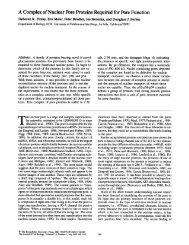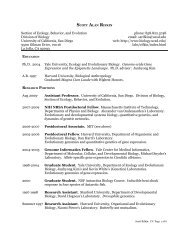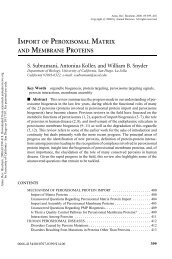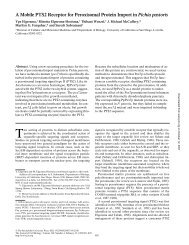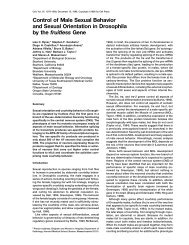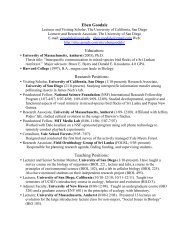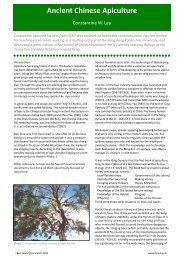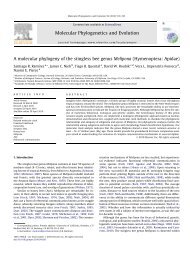Bee Basics - USDA Forest Service - US Department of Agriculture
Bee Basics - USDA Forest Service - US Department of Agriculture
Bee Basics - USDA Forest Service - US Department of Agriculture
Create successful ePaper yourself
Turn your PDF publications into a flip-book with our unique Google optimized e-Paper software.
longer throat; they are not averse to collecting nectar from open flat flowers.The remaining families are made up <strong>of</strong> short-tongued bees and are morelimited in their floral choices. They are only able to take advantage <strong>of</strong> shallowflowers, such as those <strong>of</strong> the daisy or aster family and those <strong>of</strong> the carrot family.Generally, females are larger than male bees, although there may be someoverlap in size.NestingAll bee families have species that take care <strong>of</strong> their young, by building nestsand providing food for them. But several families, Apidae, Halictidae, andMegachilidae, have some species that take advantage <strong>of</strong> their relatives. Theyhave become “cuckoos,” just like there are cuckoos among birds. As withcuckoo birds (like cowbirds), cuckoo bees lay their eggs in the nests <strong>of</strong> others.Most species <strong>of</strong> cuckoo bees only lay their eggs in the nests <strong>of</strong> a few bee species.There are cuckoo bee species that only parasitize the nests <strong>of</strong> a single species.In some species <strong>of</strong> cuckoo bees, the female kills the host’s larva before layingher egg. However, the majority <strong>of</strong> cuckoo bee larvae feed on the stored foodand the larvae <strong>of</strong> the unfortunate hosts. Cuckoo bees do not gather pollen andhave lost their pollen baskets and much <strong>of</strong> their hair. In fact, at first glancesome cuckoo bees are <strong>of</strong>ten mistaken for wasps. Cuckoo bees do visit flowersto feed on the flower’s nectar.Aside from cuckoo bees, all bees build nests, stocking them with a nutritiousmixture <strong>of</strong> pollen, nectar, and saliva before laying their eggs, and sealing themso the larvae remain safe. They generally mix the dry pollen with some nectar,kneading it into a pollen loaf used to feed their young. They add their ownsaliva to this mixture. The saliva is thought to be an important ingredient thatprovides protection against bacterial and fungal infections.Some native bees build their nests underground; others use hollow stems orholes in trees, usually left by beetles; and some use their powerful jaws to makeholes in wood. Whatever their method, they start the job <strong>of</strong> nest building bycarefully choosing the best real estate; if conditions are not right, they continuetheir search. It would not do to have their homes flooded or lacking enoughsunshine, or being too large or too small for their needs. Except for honeybees and bumble bees, females <strong>of</strong> solitary bees provide in one cell all the foodrequired by their larvae to become an adult. This is called mass provisioning.7



